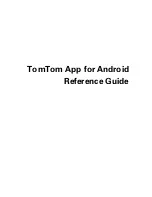
Creating and Configuring a Queue
164
Integration Guide
Creating and Configuring a Queue
You can use separate queues, one for each external system that you use. Queues
can be configured for use with publish channels and enterprise services that
integrate with one or more external systems. Queue creation and configuration
involves multiple steps.
1
Create and configure the message queue on the application server.
2
In the External Systems application, add properties to the queue.
The following properties are available for each queue.
You can create additional queues to meet system needs. If you do not use the
default queues, use an application server provider for your queue
configuration.
Use the System and Enterprise Services tabs in the External Systems
application.
Property
Description
Queue JNDI Name
References the Java Naming and Directory Interface (JNDI) name that
is configured on the application server. A default value is provided.
Queue Connection Factory Name
References the Connection Factory name that is configured on the
application server. A default value is provided.
Initial Context Factory
A value that you must configure when you do not to use the default
queues and do not use a provided application server.
Provider URL
A value that you must configure when you do not to use the default
queues and do not use a provided application server.
User ID
The user ID that you configure when the queue is secured on the
application server.
Password
The password that is configured when the queue is secured in the
application server for the user ID.
Inbound
Identifies whether the queue is used for inbound processing. If the
inbound value is null, the system uses the queue for outbound
processing.
Sequential
Identifies whether the queue is a sequential queue. If the sequential
value is null, the system uses the queue for continuous queue
processing.
Compress
Identifies whether the messages are compressed when they are written
to the queue and decompressed when they are pulled from the queue.
Compression provides significantly reduced message sizes. The
standard Java Inflater and Deflater APIs (java.util.zip) are used for
compression.
Maximum Try Count
Identifies how many times the integration framework attempts to
reprocess a message after it encounters an error. The system continues
to retry the message until the count value is met. The value of this
property must be set to zero when an error queue is implemented.
Summary of Contents for BJ0NJML - Service And Asset Management
Page 12: ...xii Integration Guide ...
Page 14: ...xiv Integration Guide ...
Page 16: ......
Page 31: ...Integration Framework for User Interface Integration Integration Framework Architecture 17 ...
Page 32: ...Integration Framework for User Interface Integration 18 Integration Guide ...
Page 60: ...Synchronous Inbound Integration Processing 46 Integration Guide ...
Page 122: ...Configuring External Systems 108 Integration Guide ...
Page 142: ...Non queue Error Management 128 Integration Guide ...
Page 154: ...Integration Components 140 Integration Guide ...
Page 156: ......
Page 172: ...Writing Custom Handlers 158 Integration Guide ...
Page 176: ...Queue Tables 162 Integration Guide ...
Page 190: ...IBM WebSphere MQ 176 Integration Guide ...
Page 212: ...Inbound Message Receipt 198 Integration Guide ...
Page 226: ...Integration Controls 212 Integration Guide ...
Page 252: ...Predefined External System Modifications 238 Integration Guide ...
Page 263: ...Web Service Queries Integration Queries 249 ...
Page 264: ...Web Service Queries 250 Integration Guide ...
Page 272: ...Integration Web Service Invocations 258 Integration Guide ...
Page 276: ...Multilanguage Attributes 262 Integration Guide ...
Page 293: ...Integration Module Invocation Integration Modules 279 ...
Page 294: ...Integration Module Invocation 280 Integration Guide ...
Page 302: ...Associating a Condition with a Signature Option 288 Integration Guide ...
Page 320: ...Work Order Collaboration Switches 306 Integration Guide ...
Page 324: ...310 Integration Guide ...
















































